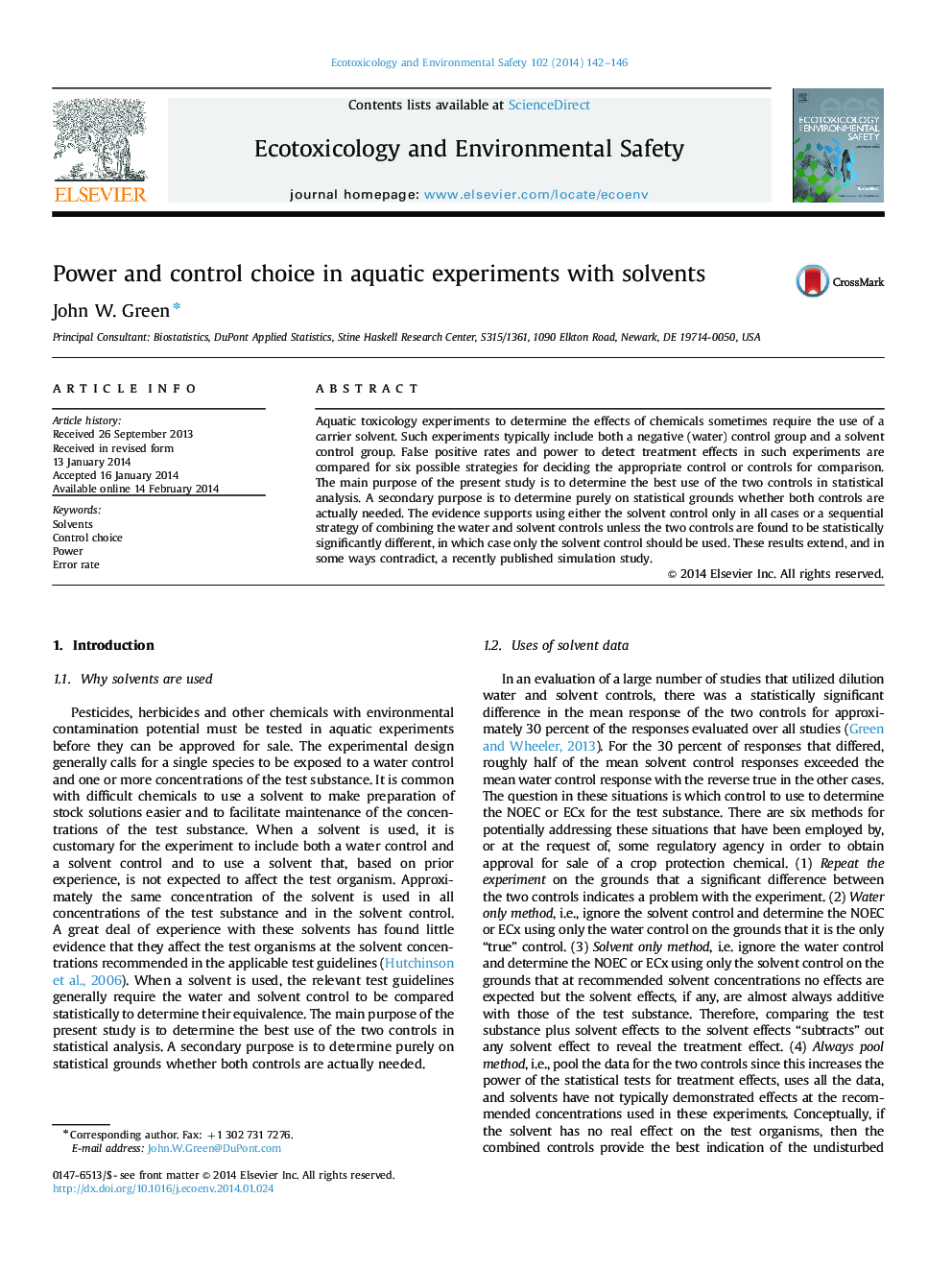| کد مقاله | کد نشریه | سال انتشار | مقاله انگلیسی | نسخه تمام متن |
|---|---|---|---|---|
| 6312167 | 1618961 | 2014 | 5 صفحه PDF | دانلود رایگان |
عنوان انگلیسی مقاله ISI
Power and control choice in aquatic experiments with solvents
ترجمه فارسی عنوان
انتخاب قدرت و کنترل در آزمایش های آبی با حلال
دانلود مقاله + سفارش ترجمه
دانلود مقاله ISI انگلیسی
رایگان برای ایرانیان
کلمات کلیدی
حلالها، انتخاب کنترل، قدرت، نرخ خطا،
ترجمه چکیده
آزمایشات سم شناسی آبزیان برای تعیین اثرات مواد شیمیایی گاهی نیاز به استفاده از یک حلال حامل. چنین آزمایشهایی معمولا شامل گروه کنترل منفی (آب) و یک گروه کنترل کننده حلال میباشند. مقادیر مثبت کاذب و قدرت تشخیص اثرات درمان در چنین آزمایش هایی برای شش راهبرد ممکن برای تصمیم گیری برای کنترل مناسب یا کنترل برای مقایسه مقایسه می شود. هدف اصلی این مطالعه تعیین بهترین استفاده از دو کنترل در تجزیه و تحلیل آماری است. یک هدف ثانویه، تعیین دقیق بر اساس آماری است که آیا هر دو کنترل در واقع مورد نیاز است. شواهد حاکی از استفاده از کنترل کننده حلال تنها در تمام موارد و یا یک استراتژی متوالی ترکیب احتمالی کنترل آب و حلال است، مگر اینکه دو کنترل به طور قابل توجهی متفاوت از نظر آماری باشد، در این صورت تنها باید از کنترل کننده حلال استفاده شود. این نتایج گسترش یافته و در بعضی موارد تناقض دارد، یک مطالعه شبیه سازی که اخیرا منتشر شده است.
موضوعات مرتبط
علوم زیستی و بیوفناوری
علوم محیط زیست
شیمی زیست محیطی
چکیده انگلیسی
Aquatic toxicology experiments to determine the effects of chemicals sometimes require the use of a carrier solvent. Such experiments typically include both a negative (water) control group and a solvent control group. False positive rates and power to detect treatment effects in such experiments are compared for six possible strategies for deciding the appropriate control or controls for comparison. The main purpose of the present study is to determine the best use of the two controls in statistical analysis. A secondary purpose is to determine purely on statistical grounds whether both controls are actually needed. The evidence supports using either the solvent control only in all cases or a sequential strategy of combining the water and solvent controls unless the two controls are found to be statistically significantly different, in which case only the solvent control should be used. These results extend, and in some ways contradict, a recently published simulation study.
ناشر
Database: Elsevier - ScienceDirect (ساینس دایرکت)
Journal: Ecotoxicology and Environmental Safety - Volume 102, April 2014, Pages 142-146
Journal: Ecotoxicology and Environmental Safety - Volume 102, April 2014, Pages 142-146
نویسندگان
John W. Green,
